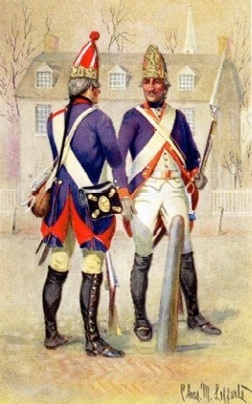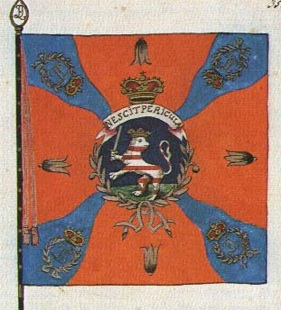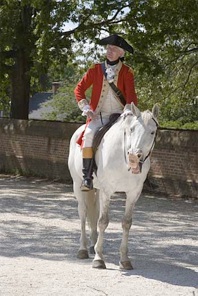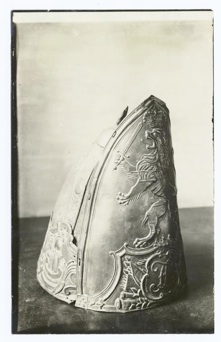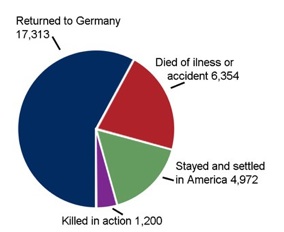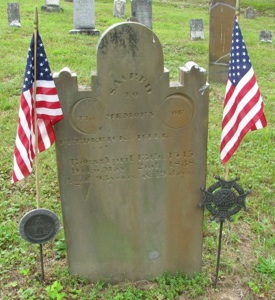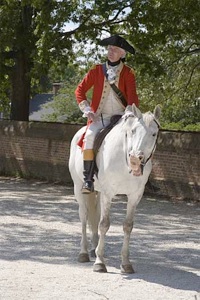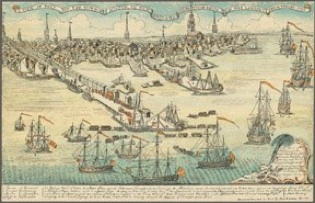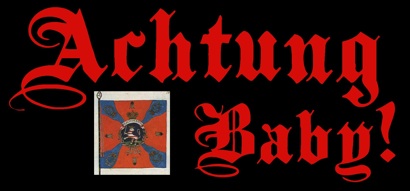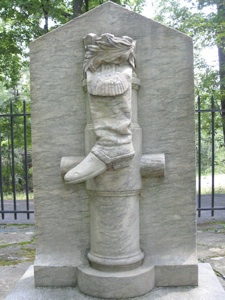Almost 5,000 soldiers who were sent to fight stayed and built lives for themselves. To give that perspective, the entire population in the city of New York in 1776 was just a little over 5,000. Some were enticed to defect because the Americans were offering land and money to defect. Others just saw the possibility of a better life in a new country. I mentioned before that their descendants live among us; I should also mention that one is writing this article. Shortly after beginning the research on this piece I discovered the information linking my family to the story of Hessians in America.
A surviving Hessian miter helmet
My 5th Great Grandfather, Frederick Hill, was born Frederick Hiller in Brunswick, Germany in either 1745 or 1750. According to A.D. Hiller (1939): "Frederick Hill was in the British Army under General Burgoyne in the northern part of New York State, when he and seventeen other soldiers left the British and on June 14, 1777, crossed the Hudson River in an old boat, using their hats for oars, and joined the American Army under General Gates, served under Major (William) Washington (Light Dragoons), was present at the capture of Burgoyne's Army, after which, he, with eight of the men who crossed the Hudson with him, was sent to Springfield, New Jersey, where he served under Captain Andrew Mann and guarded, for a short time, between the two and three hundred prisoners captured by the Americans. Sometime later in October, 1777, he went to White Plains and enlisted in Captain ___ (Irwin's) Company of the Flying Camp until March 1778. After this service he went to Fredericktown, Maryland, where he again entered the service under General Pulaski and in the fall of 1778, was ordered to Staunton, Virginia, where he, being a blacksmith, was engaged during the winter (1778-1779) caring for the horses of General Pulaski's Corps and assisted in making seven hundred pairs of horseshoes. When General Pulaski marched to the south, Frederick Hill remained in Staunton caring for a number of lame horses, and when he heard of General Pulaski's death, he returned to Fredericktown, Maryland, with the horses where he delivered them to the proper authorities. He volunteered in 1780 and served three months as Indian spy and scout, in Bedford County, Pennsylvania, under Lieutenant Wood and Colonel Davidson. He joined the Pennsylvania militia in 1780. After the Revolutionary War, he moved from Fredericktown, Maryland, to Bedford County, Pennsylvania, He was allowed pension on his application executed January 1, 1834, at which time he was a resident of Napier Township, Bedford Co. PA." So a Hessian sent to fight against rebellious British colonist wound up joining the fight for liberty and ended the war as an American. Just one of 5,000 similar stories in the larger story of the American Revolution. Achtung Baby!
For further reading on Hessian soldiers you might look at
A Hessian Diary of the American Revolution Johann Conrad Dohla
Or online information from american revolution.org
http://www.americanrevolution.org/hessians/hessindex.html
The grave of Frederick Hill
For past articles go to
http://www.breedshill.org/The_Breeds_Hill_institute/Past_articles.html
